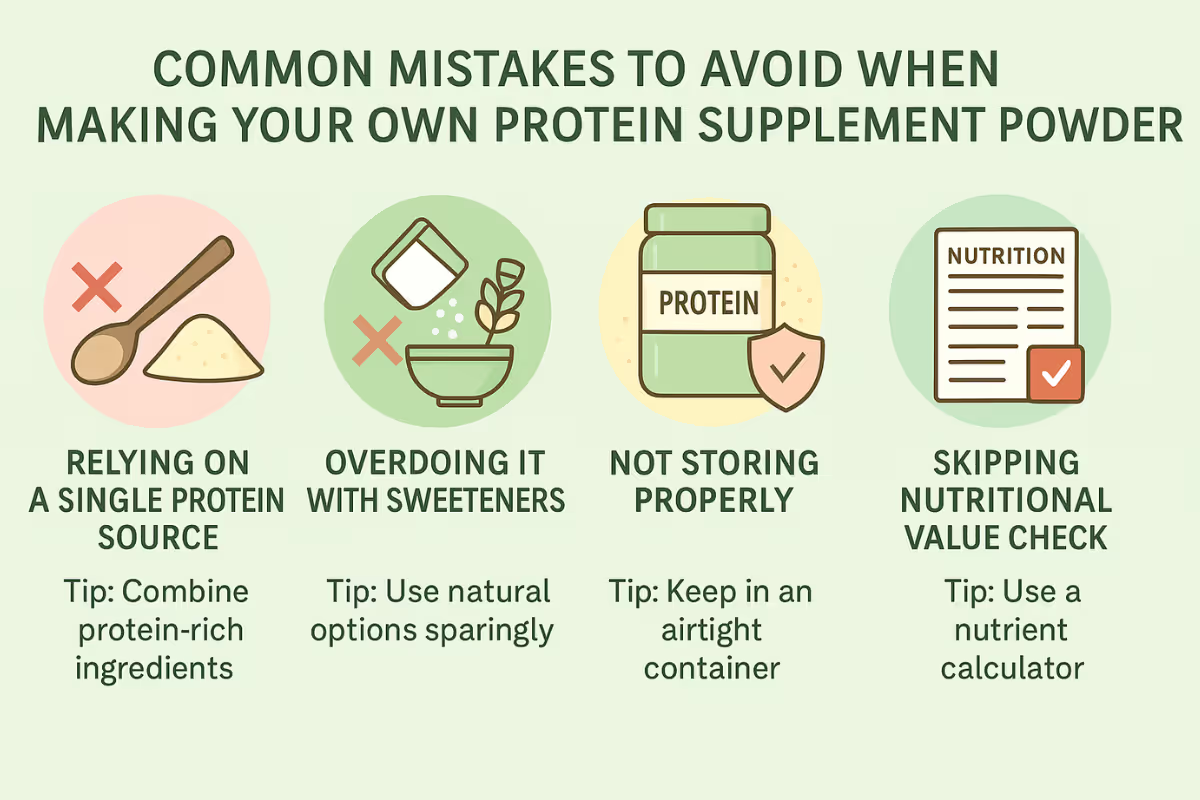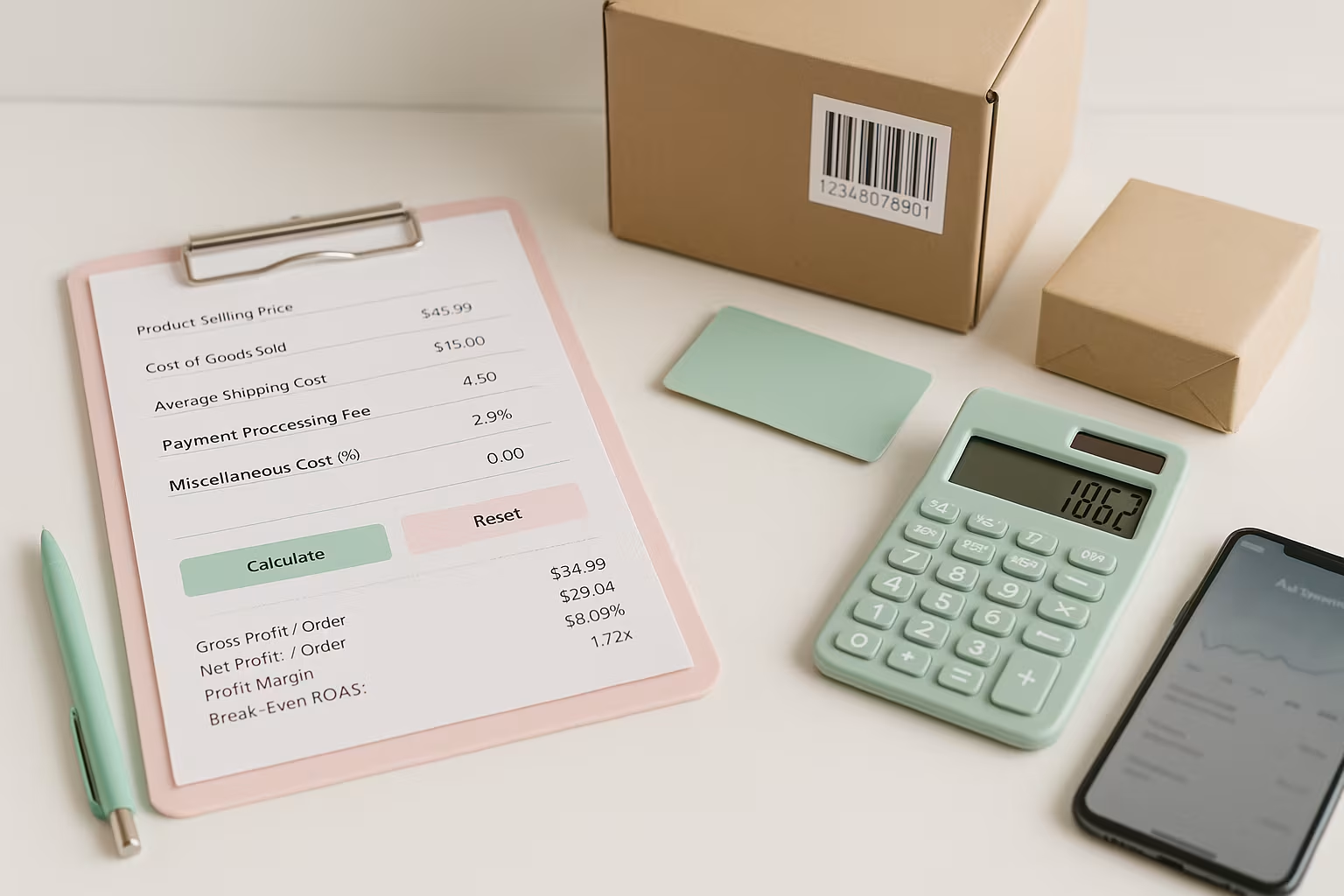.avif)
Protein powder is one of the most popular nutritional supplements worldwide, with millions of people using it daily to support fitness goals, weight management, and overall health.
This consistent demand makes it an attractive product for entrepreneurs looking to enter the health and wellness market. With the right ingredients, equipment, and formulation, you can create a protein powder that not only tastes great but also delivers real results.
In this guide, we’ll cover three simple steps to make your own protein powder to sell, along with recipes you can adapt for your brand.
Make Your Unique Protein Supplement Powder to Sell in 3 Steps

Stepping into the supplement industry to make your own protein powder can be a rewarding venture. This guide covers the essentials: sourcing quality ingredients, developing a unique formula, and managing manufacturing and packaging to ensure safety and quality.
Step 1: Source High-Quality Ingredients
The journey of learning to make protein powder begins with ingredient selection. The taste, nutrition, and overall quality of your product depend heavily on what you choose.
Types of Protein Sources
- Whey protein – Highly bioavailable and quickly absorbed.
- Casein protein – Slower digestion for sustained amino acid release.
- Soy protein – Complete plant-based protein with all essential amino acids.
- Pea protein – Hypoallergenic and easily digestible.
- Rice protein – Gentle on the stomach and ideal for sensitive diets.
Experiment with combinations to create a blend that matches your target market’s needs.
Choosing Organic and Non-GMO Ingredients
Opt for organic, non-GMO ingredients free from synthetic pesticides or genetic modifications. While often more expensive, they offer added health value. Ingredients like chia seeds add protein, omega-3s, and marketing appeal.
Finding Reliable Suppliers
Look for suppliers with strong quality control, certifications, fair pricing, and reasonable minimum orders. Building relationships with trusted suppliers ensures consistent quality and can reduce costs over time.
Step 2: Create Your Unique Protein Powder Formula
Once you’ve sourced ingredients, it’s time to develop your blend.
Determine the Right Protein Mix
Aim for a complete amino acid profile and high protein per serving. Mix plant-based proteins (soy, pea, rice) or combine with animal-based proteins (whey, casein) to achieve the desired nutrition and texture.
Add Flavor and Sweeteners
Popular flavors include vanilla, chocolate, and strawberry. Use natural sweeteners like stevia, monk fruit, or erythritol for a healthier profile. Balance taste and nutrition to appeal to your audience.
Enhance with Additional Nutrients
Boost nutritional value with add-ins like chia seeds, flax seeds, spirulina, maca powder, or cocoa for antioxidants. Always research or consult a nutritionist to ensure safety and effectiveness.
Step 3: Manufacturing and Packaging Your Protein Powder
Whether you produce in-house or partner with a manufacturer, follow professional standards for packaging and manufacturing.
Clean Manufacturing Practices
- Keep all tools and spaces clean and dry to prevent contamination.
- Use fresh, high-quality ingredients for the best results.
- Measure accurately for consistent flavor and nutrition.
- Test batches for taste and texture before finalizing.
- Store in airtight containers in a cool, dry place.
Label Your Product
Include the product name, ingredient list, nutrition facts, serving size, and storage instructions. Design labels with tools like Canva or Adobe Spark, and print on waterproof adhesive paper.
Quality Control and Safety
Maintain strict quality checks and storage procedures. If selling, consult local health authorities or FDA guidelines to ensure compliance.
Build a Resilient Supply Chain & Choose the Right Manufacturer
Your ability to deliver consistent quality depends on both your manufacturing partner and your supply chain.
- Vet Your Manufacturer: Look for cGMP certification, strong quality control processes, reasonable MOQs, and transparent lead times. Ask for Certificates of Analysis (COAs) and recent audit results.
- Plan for Redundancy: Identify at least two potential suppliers for your key ingredients so you’re not caught off guard by shortages.
- Map Your Order Flow: From ingredient sourcing to packaging to delivery, know exactly how each step works — and who is responsible — so you can troubleshoot quickly when needed.
Go-to-Market & Launch Strategy
A great product is only half the equation when learning how to start a protein powder company of your own. You also need a plan to get it into customers’ hands.
- Choose 2–3 Primary Channels: Examples include partnering with gyms, working with nutrition coaches, running targeted social ads, or leveraging influencer reviews.
- Consider a Soft Launch: Start with a small batch of 100–300 units, sell to your warm audience, and gather feedback on flavor, texture, and packaging before scaling up.
- Set Launch KPIs: Track repurchase rate, average order value, and mixability satisfaction so you can make data-driven improvements.
5 Best Protein Powder Recipes for Beginners that You Can Try

Embark on your healthy lifestyle journey with these easy-to-make, nutrient-packed homemade protein powders. Each recipe is perfect if you’re learning to make protein powder; they’re simple to prepare, full of health benefits, and can be customized to fit your brand or personal needs.
1. Seed Protein Powder – Omega Boost
A nutrient-rich blend of seeds for heart health and sustained energy.
Ingredients:
- ¼ cup chia seeds
- ¼ cup flax seeds
- ¼ cup quinoa
- ¼ cup pumpkin seeds
- 2 tbsp stevia (optional)
Instructions:
- Dry roast each seed separately over medium heat (don’t burn).
- Let them cool completely.
- Blend with stevia (if using) until fine.
- Store in an airtight container in a cool, dry place.
Quick Tip: Dry roasting enhances flavor, just avoid over-roasting to prevent bitterness.
Nutritional Value: High in protein, fiber, omega-3 fatty acids, and low in saturated fat, helps maintain steady blood sugar and supports overall health.
2. Pea & Spinach Protein Powder – Green Power
A plant-based blend that delivers all nine essential amino acids.
Ingredients:
- 2 cups green split peas
- 1 cup spinach (fresh or frozen)
- Salt to taste
Instructions:
- Rinse peas and dry in oven at 110°C for 8–10 hours.
- If using fresh spinach, blanch for 2 minutes, drain, and dry well.
- Blend dried peas and spinach until fine.
- Add salt to taste and blend again.
- Store in a cool, dry place in an airtight container.
Nutritional Value: High in protein, fiber, vitamins, and minerals, perfect for smoothies, soups, or oatmeal.
3. Chocolate Protein Powder – Antioxidant Boost
For chocolate lovers who want flavor without the guilt.
Ingredients:
- 2 cups dry milk powder
- ½ cup chia seeds
- ½ cup rolled oats (or quinoa flakes for gluten-free)
- ⅓ cup cocoa powder
- 2 tbsp stevia (optional)
Instructions:
- Combine all ingredients in a blender or food processor.
- Blend until fine.
- Store in a cool, dry place in an airtight container.
Nutritional Value: Rich in protein, fiber, and antioxidants from cocoa, a healthy, tasty treat.
4. Lentil Protein Powder – Fiber & Protein Boost
A hearty, plant-based option enhanced with nuts and seeds.
Ingredients:
- 2 cups uncooked lentils (any variety)
- ½ cup almonds
- ¼ cup sesame seeds
- Salt to taste
Instructions:
- Rinse lentils and dry in oven at 110°C until fully dried.
- Lightly roast almonds and sesame seeds.
- Cool, then blend all ingredients until fine.
- Add salt to taste and blend again.
- Store in an airtight container in a cool, dry place.
Nutritional Value: High in protein, fiber, and healthy fats, great for smoothies, soups, or baking.
5. Nut & Seed Protein Powder – Energy Blend
A balanced mix of nuts and seeds for sustained energy and nutrition.
Ingredients:
- ½ cup almonds
- ½ cup walnuts
- ½ cup chia seeds
- ¼ cup flax seeds
- ¼ cup sunflower seeds
- ¼ cup pumpkin seeds
- ¼ cup sesame seeds
Instructions:
- Dry roast nuts and seeds separately over medium heat.
- Cool completely.
- Blend until fine.
- Store in a cool, dry place in an airtight container.
Nutritional Value: Packed with protein, fiber, and healthy fats, a versatile addition to smoothies, cereals, or baking.
What NOT to Do When Making Your Own Protein Supplement Powder

When learning about protein powder, it's essential to avoid certain common pitfalls. These mistakes can affect taste, nutrition, and shelf life. Here are a few to watch out for, along with tips to get them right.
1. Relying on a Single Protein Source
While it might seem simpler to stick with one protein source, this approach can result in an incomplete amino acid profile. Mix different protein-rich ingredients like various seeds, nuts, and lentils to ensure your DIY protein powder delivers all the essential amino acids.
Tip: Understand your protein sources. Not all proteins are created equal, so combine different types to ensure a complete amino acid profile and better overall nutrition.
2. Overdoing It with Sweeteners
It can be tempting to add a lot of sweeteners to improve the taste of your protein powder, but too much can lead to unnecessary sugar consumption and can impact blood sugar levels. Stick to natural sweeteners and use them sparingly.
Tip: Consider flavor and sweetness together. Natural options like stevia or monk fruit can keep sugar content low while still making your blend enjoyable.
3. Neglecting Texture
Texture plays a crucial role in how enjoyable your protein powder is to consume. If the powder is too coarse, it might not blend well in shakes or smoothies. Make sure to blend your ingredients into a fine powder for the best consistency.
Tip: Experiment and adjust. Try different grind times, ingredient combinations, and processing methods until you achieve a smooth, easy-to-mix consistency.
4. Not Storing Properly
Homemade protein powders don't have the preservatives that store-bought options do, so proper storage is crucial. Keep your protein powder in an airtight container in a cool, dry place to prevent moisture and keep it fresh.
Tip: Include healthy fats like chia or flax seeds to boost nutrition, but remember these can be sensitive to heat and light, making airtight, cool storage even more important.
5. Skipping Nutritional Value Check
It's vital to know the nutritional value of your homemade protein powder. Use a nutritional calculator to ensure you're getting a sufficient protein boost and keeping track of other macros like carbohydrates and fats.
Tip: Check the protein content for every recipe you make. An online nutrient calculator can help you track protein, carbs, fiber, and fats so you can adjust your blend for balance and effectiveness.
Crafting Protein Powder That Stands Out
Avoiding mistakes when making your own protein supplement powder ensures it’s nutritious, enjoyable, and safe, turning a basic blend into one customers love.
By understanding your protein sources, balancing flavor, and checking nutritional content, you can create your own protein powder brand that supports health goals while standing out in a competitive market. The key is to combine great nutrition with a great user experience.
Ready to bring your protein powder idea to life? Consider private label supplement opportunities to create market-ready products backed by expert support and compliance guidance.
The information provided in this article is meant for general informational purposes only and should not be considered as professional or legal advice. We do not guarantee the completeness, accuracy, reliability, or suitability of the information in this article. We strongly recommend seeking professional guidance that suits your individual circumstances.
FAQ
As health and fitness awareness grows, many individuals recognize the benefits of protein in muscle growth, recovery, and general well-being. Protein powders provide a convenient way for people to meet their daily protein needs, making the idea of how to make your own protein powder to sell even more appealing.
Whey protein is derived from milk and is known for its quick absorption. On the other hand, plant-based protein powders, like those from pea, soy, brown rice, and other sources, cater to vegans/vegetarians and those with lactose intolerance. Their absorption rates can differ based on the source.
Always source high-quality ingredients and opt for manufacturing practices that prioritize safety and quality assurance. Periodic lab testing can further validate the purity and potency of your protein blend.
Yes, regulations vary by country. It's crucial to understand local food and health regulations, labeling requirements, and safety guidelines when planning to sell or even just make your own protein powder.
Absolutely! You can make your own protein powder using various ingredients like chia seeds, sunflower seeds, and brown rice. It's a great way to ensure the purity of ingredients and customize the blend to your liking.
Natural flavorings like cocoa powder, vanilla extract, and dried fruits can be used. Always opt for flavors without added sugars or artificial ingredients to keep saturated fat low and maintain the healthiness of the product.
Airtight containers that protect against moisture, light, and air are ideal. You can opt for eco-friendly packaging to appeal to environmentally-conscious consumers.
Can too much protein be harmful?
Related blogs

Break-Even ROAS Calculator: Find Out What You Can Afford to Spend on Ads

Ecommerce ROI Calculator: Scale Your Store

Customer Lifetime Value Calculator: Unlock Your E-commerce Revenue Potential


